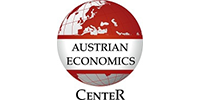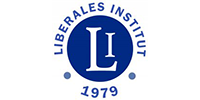The Austrian case against inflation:
The hidden costs of monetary distortion
This material was published as part of our “Publish with Us” series.
Abstract
This article examines the economic costs of inflation from the perspective of the Austrian school of economics, emphasizing its redistributive effects, distortion of relative prices, and disruption of economic calculation. Inflation redistributes wealth, benefiting early recipients of new money while disadvantaging later ones, as described by the Cantillon Effect. Drawing chiefly on the works of F. A. Hayek, the paper challenges the mainstream focus on aggregate price level, arguing that inflation’s real harm lies in its impact on relative prices, which leads to resource misallocation and inefficiencies.
Additionally, inflation functions as a hidden tax, eroding savings and benefiting debtors —particularly governments— by reducing the real burden of public debt. Beyond its economic implications, inflation distorts market signals and disrupts economic coordination. While economists typically strive for neutrality in policy assessments, inflation represents a unique case where broad consensus exists across various schools of economic thought regarding its negative consequences for long-term prosperity.
An Introduction: The Historical Persistence of Inflation
F. A. Hayek (1990; p. 33 [1976]) wrote that “history is largely a history of inflation, and usually of inflations engineered by governments and for the gain of government.”1 Every new episode of inflation only reinforces the legitimacy of resistance to price instability. In the 1970s, an era heavily influenced by misguided Keynesian macroeconomic policies,2 inflation was often justified as a means to achieve ‘full employment.’ Today, however, there is no longer any doubt that an increased inflation rate is an outright detriment to both the economy and society. Even John Maynard Keynes (1919) acknowledged this risk when he remarked: “There is no subtler, no surer means of overturning the existing basis of society than to debauch the currency. The process engages all the hidden forces of economic law on the side of destruction, and does it in a manner which not one man in a million is able to diagnose.”
Winners and Losers: Effects of Inflation on Debtors and Creditors
In mainstream textbook accounts,3 —and perhaps even in the public consciousness— the prevailing belief is that the most damaging impact of (unanticipated) inflation is the change it causes in the relationship between debtors and creditors. However, Hayek (1996; p. 94 [1970]) states, “Of course, an unforeseen depreciation of the value of money harms creditors and benefits debtors. This is important but by no means the most important effect of inflation.”
From a theoretical perspective, it is essential to distinguish between expected and unexpected inflation regarding their effects on debtors and creditors. If inflation exceeds what was anticipated when a contract was negotiated, debtors benefit as the real value of their obligations decreases. Conversely, creditors suffer losses as their claims on debtors lose real value. Unanticipated inflation, therefore, leads to a redistribution of wealth from creditors to debtors. If inflation is expected, economic agents can mitigate its redistributive effects by adjusting contractual terms accordingly. When a higher inflation rate is factored into voluntary agreements, it does not cause the same distortions as completely unexpected inflation. However, as the next chapter will demonstrate, even anticipated inflation is not free from harmful redistributive effects.
The Cantillon Effect: How Inflation Redistributes Wealth
In his famous essay, Richard Cantillon (2010; p. 147 [1755]) wrote: “If gold or silver mines were found in a state, and considerable quantities of minerals were extracted from them, the owners of these mines, the entrepreneurs, and all those who work there, will increase their expenditures in proportion to the wealth and profit they make. They will also lend the money they have over and above what they need for their expenses and earn interest.” This is one of the earliest recorded observations that those who receive new money first can spend it on goods before prices rise, disadvantaging later recipients who face higher prices.
Although this is an old—but still relevant—insight4, its importance has not been sufficiently emphasized in mainstream economics. This is largely due to the excessive focus on the abstract concept of the “price level,” which obscures the importance of relative prices and the causes or consequences of their changes. Ludwig von Mises (2006 [1979]) cautions that the notion of a price level misleads many into thinking of it as analogous to the level of a liquid in a container, rising or falling uniformly. However, as Mises (2006; p. 59 [1979]) points out, “Prices do not change to the same extent at the same time. There are always prices that are changing more rapidly, rising or falling more rapidly than other prices.”
As Adam Smith writes in his Essay on the History of Astronomy, scholars use analogies to explain concepts by drawing comparisons to other fields. While this can sometimes lead to “a few ingenious similitudes,”5 it often makes the description of the original phenomenon more ambiguous. This is because the borrowed analogy brings with it characteristics that may not apply, leading to confusion.6 Hayek (1998, p. 52 [1973]) similarly warns that such analogies can become “more misleading than helpful.”
It is questionable whether the “price level” is a meaningful concept at all. The aggregate of selected prices in an economy has no real-world counterpart; only relative prices exist. Michael Woodford (2003; p. 5) argues that resource allocation depends only on relative prices, not on their absolute levels. However, it is precisly relative prices that are most affected by the injection of new money. As Hayek (1980; p. 16) observed, “the harmful effects of an excessive supply of money consist not merely in the changes of the average price level but quite as much in the distortion of the whole structure of relative prices and the consequent misdirection of productive effort which it causes.”7
Since new money is not distributed uniformly, any monetary expansion distorts relative prices, causing redistributive effects regardless of its impact on inflation. Early recipients benefit from purchasing goods at pre-inflation prices, while those who receive the new money later —or not at all— suffer a loss in purchasing power. Inflation, in the Austrian sense, is thus a process of redistribution where some gain at the expense of others.8
Inflation as an Unseen Tax
Rothbard (2024; p. 70 [1963]) argues that “inflation is a powerful and subtle means for government acquisition of the public’s resources, a painless and all the more dangerous form of taxation.” Jerry Jordan similarly describes inflation as “simply a tax that has not been voted on.” (Šíma, 1999).9
Since unexpected inflation erodes the value of debt, and the largest debtor in any economy is typically the state, inflation often benefits governments by reducing the real burden of public debt. However, while inflation may increase government revenues, it can also raise expenditures, meaning its overall impact on public finances is ambiguous. But even if inflation leads to higher government spending, it still reduces the real value of accumulated debt.
How Inflation Distorts Economic Calculation
Inflation does not merely alter prices; it distorts the entire economic calculation process. The prices of goods embody all relevant information needed to allocate scarce resources rationally among their alternative uses. Hayek (1945) argues that prices are extremely efficient because they provide the most immediate and essential information that individuals need to make economic decisions. Without market prices, economic coordination becomes impossible.
Hayek (1988, p. 104) further states that “prices and profit are all that most producers need to be able to serve more effectively the needs of men they do not know. They are a tool for searching—just as, for the soldier or hunter, the seaman or air pilot, the telescope extends the range of vision.”10 And as Ludwig von Mises (2012; p. 14 [1920]) observes, economic calculation affords us “a guide through the oppressive plenitude of economic potentialities. […] Without it, all production […] would be gropings in the dark.“11
Murray N. Rothbard (2024, p. 72 [1963]) states that one of the most harmful consequences of inflation is its distortion of economic calculation, which he calls “that keystone of our economy.” When inflation increases nominal incomes for certain producers, it generates temporary profits that exist only until new money circulates through the economy and alters the prices of other goods. This artificial boost misleads producers into believing their industries are thriving, prompting them to expand investment based on false signals.
Consequently, inflation distorts production and leads to inefficient resource allocation. It obscures price signals, making it harder for businesses to differentiate genuine market demand from temporary inflation-driven surges. This uncertainty results in misguided investments and inefficiencies across the economy.12
The Importance of a Low-Inflation Environment
Rothbard (2009; p. 991 [1962]) writes that while the gains of those who benefit from inflation are easily visible, the losses suffered by everyone else remain hidden. This may therefore be another example of the phenomenon Frédéric Bastiat (2007 [1850]) aptly described in What Is Seen and What Is Not Seen. According to Rothbard (2024; p. 72 [1963]), inflation functions like an imaginary race in which the outcome depends largely on who receives the new money first and in what sequence. Rather than creating wealth, inflation merely redistributes purchasing power among economic actors based on their position in this arbitrary race. In the aggregate, however, it contributes nothing to overall welfare.
Henry Hazlitt (2008; p. 150 [1946]) argues that inflation “may indeed bring benefits for a short time to favored groups, but only at the expense of others. And in the long run it brings disastrous consequences to the whole community.” This conclusion is not unique to the Austrian school of economics; similar arguments appear in mainstream economic analyses. For instance, a study by the ECB (2010; p. 110) explicitly states that “inflation, by distorting price signals, impairs the functioning of market economies and therefore ultimately exerts a negative impact on overall macroeconomic performance.”
Price stability is a conditio sine qua non for prosperity. While the long-term wealth of nations does not hinge primarily on monetary effects, it is not entirely insulated from them. A persistently unstable macroeconomic environment, characterized by frequent and significant price fluctuations, will inevitably have negative impact on the key determinants of national wealth. History is replete with examples of economic disruption resulting from a failure to control severe price instability.
The Normative Debate on Inflation
Many economists do not shy away from using normative judgments when discussing inflation, frequently highlighting its harmful effects. For example, F. A. Hayek (1950; p. 174) states: “Inflation, even ‘repressed inflation,’ is undoubtedly an evil, though some would say a necessary evil if other desirable aims are to be achieved.” Even Milton Friedman, widely recognized for his work on the methodology of positive economics (Friedman, 1966), assigned a distinctly negative connotation to inflation. In his words (Friedman, 1979; p. 253): “Inflation is a disease, a dangerous and sometimes fatal disease, a disease that if not checked in time can destroy a society.”
Thus, although economists are generally expected to maintain neutrality in their analysis and to refrain from normative assessments of economic policies,13 inflation seems to be something of a sui generis case. There is a broad consensus among economists from different schools of thought that inflation—especially unexpectedly high inflation—is unquestionably harmful to society as a whole.
Based on the arguments presented above, it is evident that inflation does not affect all individuals equally. While it may temporarily benefit some entities, it necessarily comes at the expense of others, making it a zero-sum (if not negative-sum) game. High inflation imposes not only economic costs but also social and political ones. It is conceivable that inflation exacerbates social inequalities, hitting hardest those who are least able to shield themselves from its effects. This is why J. A. Schumpeter (2003; p. 427 [1943]) notes that “one of the most powerful factors that make for acceleration of social change is inflation.”14
Conclusion
Inflation is not only a rise in the aggregate price level; it is also a force that distorts economic calculation, disrupts market coordination, and arbitrarily benefits some at the expense of others. As the Austrian school of economics emphasizes, inflation distorts the relative price structure, misleading the entrepreneurs, misallocating resources, and ultimately reducing overall prosperity. Its effect goes beyond the economic realm, eroding savings, exacerbating social inequality, and functioning as an implicit tax that disproportionately harms the individual least able to shield oneself from its consequence.
While governments and some debtors may benefit in the short run, history demonstrates that persistent inflation undermines trust in money, and hampers long-term prosperity. Since sound money is a prerequisite for rational economic calculation and efficient resource allocation, limiting inflationary distortions is essential to preserving the functioning of the market economy —and with it, lasting prosperity.
1 Cf. Hayek (2009; p. 9 [1976]): „[…] history, indeed, has been largely a history of inflation […]“ and Hayek (1996; p. 105 [1970]): „[…] it is largely true that world history is a history of inflation […]“
2 See Hayek (2009; p. 10): „Sir John Hicks has even proposed that we call the third quarter of this century, 1950to 1975, the age of Keynes, as the second quarter was the age of Hitler. I do not feel that the harm Keynes did is really so much as to justify that description. But it is true that, so long as his prescriptions seemed to work, they operated as an orthodoxy which it appeared useless to oppose.“
3 See e.g. Mankiw (2010).
4 Cf. Huerta de Soto (2020; pp. 615-616 [1998]): “[…] Cantillon argued, as Hume later would, that variations in the quantity of money mainly affect the relative price structure, rather than the general price level.”
5 Quoted from Hayek (1952; p. 11).
6 Cf. Mises (1998; p. 114 [1949]): „Analogies and metaphors are always defective and logically unsatisfactory.“
7 See also Hayek (2008; p. 218 [1931]): „[…] almost any change in the amount of money, whether it does influence the price level or not, must always influence relative prices. And, as there can be no doubt that it is relative prices which determine the amount and the direction of production, almost any change in the amount of money must necessarily also influence production.“
8 Mises (1953; p. 240) used the term “inflation” to refer to “an increase in the quantity of money […] that is not offset by a corresponding increase in the need for money […]” Cf. Rothbard (2009; p. 990 [1962]): “The process of issuing pseudo warehouse receipts or, more exactly, the process of issuing money beyond any increase in the stock of specie, may be called inflation.” See also Rothbard (2024; p. 61 [1963]): “Inflation may be defined as any increase in the economy’s supply of money not consisting of an increase in the stock of the money metal.”
9 Cf. Hazlitt (2008; p. 156 [1946]): „[…] inflation is a kind of tax that is out of control of the tax authorities.“
10 Cf. Horwitz (2020; p. 50): „Profit and loss are like the pleasure and pain signals sent by our nerve endings. […] Without genuine profit and loss signals, producers are flying blind, and consumers suffer as a result.“
11 See also Mises (1998; p. 696 [1949]): „What is called a planned economy is no economy at all. It is just a system of groping about in the dark.“
12 See Rothbard (2024; p. 73 [1963]) „By creating illusory profits and distorting economic calculation, inflation will suspend the free market’s penalizing of inefficient, and rewarding of efficient, firms.“
13 See Mises (1998; p. 10 [1949]): „Ultimate decisions, the valuations and the choosing of ends, are beyond the scope of any science. Science never tells a man how he should act; it merely shows how a man must act if he wants to attain definite ends.“
14 See also Hazlitt (2008; p. 157 [1946]): „[Inflation] plants the seeds of fascism and communism. It leads men to demand totalitarian controls. It ends invariably in bitter disillusion and collapse.“
Bibliography
Bastiat, F., 2007 [1850]. What Is Seen and What Is Not Seen. Translated by C. J. P. Auburn, Alabama: Ludwig von Mises Institute.
European Central Bank, 2010. The Great Inflation: Lessons for Monetary Policy. ECB Monthly Bulletin: May, pp. 99–110. Available at: https://www.ecb.europa.eu/pub/pdf/other/mopo_strat_art1.pdf?b19aa418314b36e5c21fe296a788b20b (Accessed: 6 April 2025).
Friedman, M., 1960. The Methodology of Positive Economics. In: Essays in Positive Economics. Chicago: University of Chicago Press, pp. 3–43.
Friedman, M. and Friedman, R., 1979. Free to Choose: A Personal Statement. New York: Harcourt.
Hayek, F. A., 1945. The Use of Knowledge in Society. The American Economic Review, 35(4), pp. 519-530.
Hayek, F. A., 1950. Full Employment, Planning and Inflation. London: Routledge.
Hayek, F. A., 1952. The Counter-Revolution of Science: Studies on the Abuse of Reason. Glencoe, Illinois: Free Press.
Hayek, F. A., 1953. The Theory of Money and Credit. 2nd ed. New Haven: Yale University Press.
Hayek, F. A., 1980. How to Deal with Inflation. The Times. Available at: https://www.margaretthatcher.org/document/114503 (Accessed: 6 April 2025).
Hayek, F. A., 1988. The Fatal Conceit: The Errors of Socialism. Chicago: University of Chicago Press.
Hayek, F. A., 1990 [1976]. The Denationalisation of Money: The Argument Refined. London: Institute of Economic Affairs.
Hayek, F. A., 1996 [1970]. Can We Still Avoid Inflation?, in: Ebeling, R. M. (ed.) The Austrian Theory of the Trade Cycle and Other Essays. Auburn, Alabama: Ludwig von Mises Institute, pp. 93–110.
Hayek, F. A., 2008 [1935]. Prices and Production, 2nd ed. In: J. T. Salerno, ed. Prices and Production and Other Works: F. A. Hayek on Money, the Business Cycle, and the Gold Standard. Auburn, Alabama: Ludwig von Mises Institute, pp. 189–329.
Hayek, F. A., 2009 [1976]. Choice in Currency: A Way to Stop Inflation. London: Institute of Economic Affairs.
Horwitz, S., 2020. Austrian Economics: An Introduction. Auburn, Alabama: Ludwig von Mises Institute.
Huerta de Soto, J., 2020 [1998]. Money, Bank Credit, and Economic Cycles. 4th ed. Auburn, Alabama: Ludwig von Mises Institute.
Keynes, J. M., 1919. The Economic Consequences of the Peace. London: Macmillan & Co., Limited.
Mankiw, N. G., 2010. Principles of Economics. 6th ed. Boston: Cengage Learning.
Mises, L. v., 1953. The Theory of Money and Credit. 2nd ed. New Haven: Yale University Press.
Mises, L. v., 1998 [1949]. Human Action: A Treatise on Economics. 4th ed. Auburn, Alabama: Ludwig von Mises Institute.
Mises, L. v., 2006 [1979]. Economic Policy: Thoughts for Today and Tomorrow. Auburn, Alabama: Ludwig von Mises Institute.
Mises, L. v., 2012 [1920]. Economic Calculation in the Socialist Commonwealth. Auburn, Alabama: Ludwig von Mises Institute.
Mises, L. v., 2010 [1755]. An Essay on Economic Theory. Translated by H. Higgs. Auburn, Alabama: Ludwig von Mises Institute.
Rothbard, M. N., 2009 [1962]. Man, Economy, and State. Auburn, Alabama: Ludwig von Mises Institute.
Rothbard, M. N., 2024 [1963]. What Has Government Done to Our Money? 6th ed. Auburn, Alabama: Ludwig von Mises Institute.
Schumpeter, J. A., 2003 [1943]. Capitalism, Socialism and Democracy. 6th ed. London: Routledge.
Šíma, J. (ed.), 1999. Jerry Jordan: The Changing Role of Central Banks in the 21st Century. Prague: Liberal Institute. ISBN 978-80-86389-01-4.
Woodford, M., 2003. Interest and Prices: Foundations of a Theory of Monetary Policy. Princeton: Princeton University Press.






























